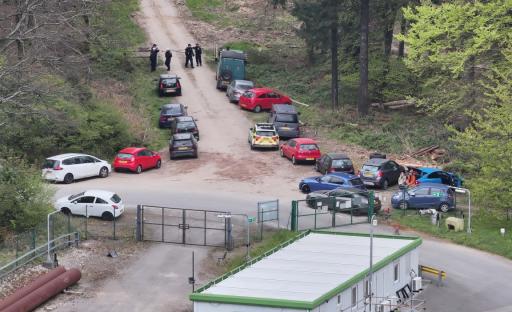China’s space agency said a core segment of its biggest rocket reentered Earth’s atmosphere above the Maldives in the Indian Ocean and that most of it burned up early Sunday.
Harvard astrophysicist Jonathan McDowell, who tracked the tumbling rocket part, said on Twitter, “An ocean reentry was always statistically the most likely. It appears China won its gamble... But it was still reckless.”;
Read more: Chinese rocket debris likely to hit earth by Sunday
People in Jordan, Oman and Saudi Arabia reported sightings of the Chinese rocket debris on social media, with scores of users posting footage of the debris piercing the early dawn skies over the Middle East.
Usually, discarded rocket stages reenter the atmosphere soon after liftoff, normally over water, and don’t go into orbit.
China’s official Xinhua News Agency later clarified that reentry occurred Sunday at 10:24 a.m. Beijing time. “The vast majority of items were burned beyond recognition during the reentry process,”; the report said.
Despite that, NASA Administrator Sen. Bill Nelson issued a statement saying: “It is clear that China is failing to meet responsible standards regarding their space debris.”;
The roughly 30-meter (100-foot) long rocket stage is among the biggest space debris to fall to Earth. China’s space program, with its close military links, hasn’t said why it put the main component of the rocket into space rather than allowing it to fall back to earth soon after discharging its payload, as is usual in such operations.
The Long March 5B rocket carried the main module of China’s first permanent space station — Tianhe, or Heavenly Harmony — into orbit on April 29. China plans 10 more launches to carry additional parts of the space station into orbit.
An 18-ton rocket that fell last May was the heaviest debris to fall uncontrolled since the former Soviet space station Salyut 7 in 1991.
China’s first-ever space station, Tiangong-1, crashed into the Pacific Ocean in 2016 after Beijing confirmed it had lost control. In 2019, the space agency controlled the demolition of its second station, Tiangong-2, in the atmosphere. Both had been briefly occupied by Chinese astronauts as precursors to China’s permanent station, now under construction.
Read more: Rocket debris hurtling towards Earth lands in Indian Ocean, China says
In March, debris from a Falcon 9 rocket launched by U.S. aeronautics company SpaceX fell to Earth in Washington and on the Oregon coast.
China was heavily criticized after sending a missile to destroy a defunct weather satellite in January 2007, creating a large field of hazardous debris imperiling satellites and other spacecraft.



